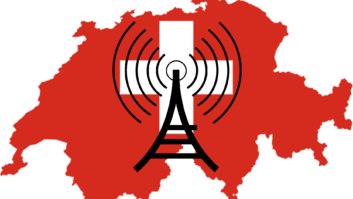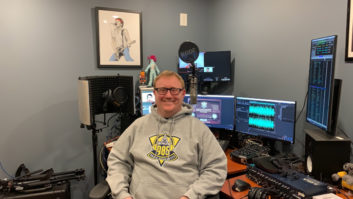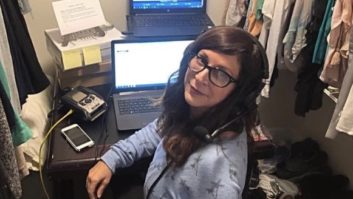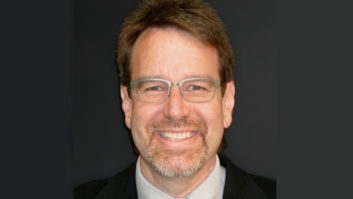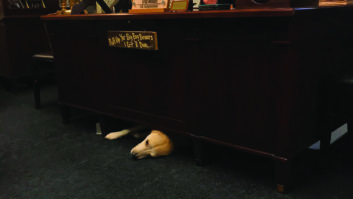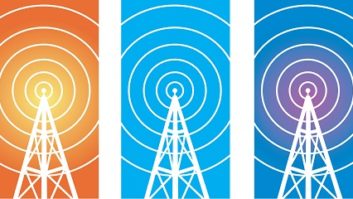Before reading this article, read and consider the question shown below.

SBE certification is the emblem of professionalism in broadcast engineering. To help you get in the certification exam taking frame of mind, Radio World Engineering Extra poses a typical question in every issue. Although similar in style and content to the exam questions, these examples are not from past exams nor will they be on any future exams in this exact form.
The correct answer is (c).
The interference generated by an AM station in the United States, when it cannot reduce power by 24 kW at night, will be notable. For decades the FCC has been allocating AM stations to communities, reviewing and approving facilities utilizing a criterion of acceptable interference. The goal (in a perfect world) is for the primary service area of the community of license and sometimes the surrounding region to enjoy interference-free, reliable service.
The calculations to estimate and evaluate the interference given and received by stations (co-channel and adjacent) use ground-wave values for daytime review. However, mainly skywave propagation is considered for critical hours and nighttime operation.
During daylight hours the ionosphere layer of the earth’s atmosphere is ionized by the sun and medium-wave signals pass through into outer space. At night, without solar heating, the atmosphere “hardens up” and reflects back to earth a portion of the broadcast signal, essentially bouncing the signal a great distance.
Because of the oblique angle of the signal arriving from above (the skywave), a portion of that signal can bounce again, taking off towards the atmosphere, continuing the signal even further.
The notable reduction in field strength by reducing from 25 to 1 kW antenna system input power, and frequently also narrowing the directions in which that signal is propagated by using a directional antenna, are legally required to limit skywave interference to other stations at night.
With an omnidirectional signal and an antenna input power of 25 kW, the area of nighttime interference could cover entire states or even a large portion of the continental United States.
SIGNIFICANT DISRUPTION
Over the last 90 years or so of broadcasting, federal regulators have been asked on many occasions to clarify and quantify the circumstances when a station needs to go off the air or reduce power to avoid interference as well as the latitude they have to stay on while correction takes place.
One of their most recent visits to this subject was started in 1997, and after much reflection and exchange, culminated in the issue of the Report and Order in MB Docket 03-151, FCC 07-97, released May 25, 2007, which you can read in PDF form at tiny.cc/FCC703.
Since the text that came out of this R&O is the current applicable regulation, let’s quote from the commission’s own Web site commentary on the subject (which you can see at tiny.cc/fcc72):
Within question 5:
In general, the licensee or permittee must correct any malfunction which could cause interference or turn the transmitter off within 3 hours of the malfunction. Some malfunctions, however, must be corrected within 3 minutes. Examples of situations requiring termination within 3 minutes are operations posing a threat to life or property, or that is likely to significantly disrupt operations of other stations (such as spurious emissions or operations substantially at variance from the authorized radiation pattern), unless the power is sufficiently reduced in that period to eliminate any excess radiation. See Sections 73.62 for AM stations and Section 73.1350 for AM, FM, and TV stations …
The circumstances outlined in the certification question annotated above definitely require terminating operation within 3 minutes.
As of this writing, broadcast station owners are immune to license renewal challenges in the main if they are “good actors.” This includes not being found in violation of the FCC rules. The goal is to expend the effort to be and remain compliant to avoid any risk to the next license renewal.
The beginning of any effort to achieve the highest level of compliance should be to meet or exceed all the areas of concern addressed in the FCC’s station self-check lists. You should use these as your roadmap to compliance. The Broadcast Station Self-Inspection Checklists can be found at www.fcc.gov/eb/bc-chklsts.
THINK BIG
Not to confuse issues, but when could you stay on without having to correct such an egregious operating problem as this 25 kW non-directional at night?
Well for instance … imagine the unspeakable horror of a Category 5 tornado passing through your county, cutting a swath of destruction and taking down communications towers, power and phone lines.
You find that obviously something is wrong out at the transmitter site as you cannot change pattern directly. You’re lucky your station is still on the air.
Should you go off ? While I’m no lawyer, I tell my clients that they should stay on in such situations until the emergency has stabilized. Without reliable communications, the local authorities may need to dispatch and organize their professional and volunteer members using your transmission facilities. Everyone has an AM car radio and more than likely you’ll have the interview mic in your studio taped on the speaker of your ham 2 meter walkie so that the police, fire or public service dispatcher on the other end can route vital personnel to where they are needed.
In between, you’ll read the list of the dead and living … reunite families … steer people to aid stations … organize supplies … warn of bad water … calm the community … ask for neighbors to check on the elderly and sick who need immediate attention … and generally let the people of your community know what’s going on.
Frankly these times are broadcasting’s finest hours, when we are needed and really come through. Interference to a 20 minute music sweep 1,000 miles away just doesn’t matter.
Stay on and do your job. When it safe to go out to the transmitter, then you can get out there and fix the problem.
A comment about answer (d). In SBE exams and any other test of this ilk, logic is an important factor in eliminating answer choices. Not every station’s transmitter location requires you to drive there. The transmission system in this question could have been in the same building or across the yard.
The SBE Certification exam at the CBRE level is open book. Up to a third of the exam could be on FCC regulations so one should take a recent copy of Parts 73 and 74 of CFR 47.
However, the consensus of most recent test takers is that the exam room is not a place to begin acquainting yourself with FCC regulations and that a thorough and comfortable knowledge of FCC regulation is desirable before you take the test. Having the “book” allows you more to confirm your answer, not search to find it.
Please note that the deadline for signing up for the next cycle of SBE certification exams is April 17 for testing that will be given between June 5–15 in the local SBE chapters.
Missed some Certification Corners or want to review them for your next exam? You can find back stories under Columns at radioworld.com.
* * *
For the next issue, a CBT level question:
You have an immediate need to create 12 volts of AC for a power tube filament using two available, identical 6 volt secondary transformers. Referring to the drawing below, how would you connect them together to make 12 volts from a 240 volt AC supply?

a. There is no combination that will work because the cores are not common.
b. A tied to S1, H tied to S2, B & C tied together, D & E tied together, F & G tied together, J & K tied together and then connect the 12 volt load across I & L
c. A, C, E & G tied to S1; B, D, F & H tied to S2; J & K tied together and then connect the 12 volt load to I & K
d. A & E tied to S1, D & H tied to S2, B & C tied together, F & G tied together, J & K tied together and then connect the 12 volt load across I & L
e. A & E tied to S1, D & H tied to S2, B & C tied together, F & G tied together, J & L tied together and then connect the 12 volt load across I & K







